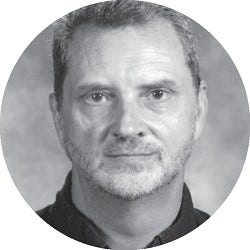Breakthroughs: Teaching the Difficult History of 9/11 and Beyond
“We concluded that no content in the course would be censored. Instead, students would choose how they would experience it.”

“We concluded that no content in the course would be censored. Instead, students would choose how they would experience it.” — Darren Hornbeck
This year’s graduating class of high school seniors carry an interesting distinction: none of them were alive during the attacks of September 11, 2001. In the years following 9/11, students would come into my class knowing less and less about it. It was almost like watching history being erased with each new class.
As teachers, filling in voids of knowledge is what we do best and is contingent upon the quality of the curriculum we are given. In the case of teaching about 9/11, it’s sparse. As teachers, we can either complain about the problem, or we can fix it. We chose to fix it.
Dillon Drenner, Elizabeth Anderson and Kayla Curran were not yet born on Sept. 11, 2001, but they have a level of…www.fredericknewspost.com
In 2016, our school began piloting a new elective called September 11th to the Present, a non-leveled class open to juniors and seniors. We began planning it a year in advance, securing support from system administration and our local board of education.
Our first realization was that we would need to write the curriculum ourselves. There were no textbooks available and understandably so. To solve the problem, we relied heavily on online, open source primary documents, using the 9/11 Commission Report as a springboard. In lieu of a text, students were given computer tablets, purchased with a grant from the NEA Foundation.
The next challenge was how to present the material and the selection of pedagogical practices to support instruction. Teaching history that is within living memory is different. People in our community died in the attacks and the wars that resulted from it. And the material is very graphic. Should we censor it or allow students to experience it the way we did?
In the end, blended learning became the format that solved many of these challenges. We concluded that no content in the course would be censored. Instead, students would choose how they would experience it. In a typical week, students learn the basics via interactive lecture and discussion, followed by self-guided exploratory learning on their own.
Looking for the right mix of face-to-face instruction with technology-mediated activities? Find tips and resources for…www.edutopia.org
They may choose to read a blog from a survivor of the World Trade Center (WTC) collapse (low intensity), listen to audio of a flight attendant on one of the hijacked jets (medium intensity), or listen to recordings of 9–1–1 calls made from above the crash zones of the WTC (high intensity). Students thus tailor the course to match their own tolerance levels.
Figuring out the best way to assess student learning was another challenge. We decided to use authentic, project-based assessments instead of paper and pencil exams. Again, student choice is vital. Student projects range from building scale models of the WTC complex to filmed interviews with family or friends. Or they might create facial masks that show what a soldier’s mental pain would look like if it were as visible as a flesh wound.
See Edutopia’s core strategies in action with our Five Keys video series. Take a deeper look at each strategy as we…www.edutopia.org
Perhaps more than anything else, making personal connections to the material is what’s important. In so doing, the gap between them and us starts to close. A few years ago, a student approached me and asked if he could alter the rules for the mask assignment. Instead of using an online biography he wanted to use his dad. When I asked him if his father would be comfortable with it, his response was that they would make the mask together.
As educators, we sometimes face curricula that are not up to the task of adequately preparing students. But we can change that. The selection of good pedagogical practice married to well-rounded instruction can fill in the gaps. Placing students in charge of their learning — and trusting them with the content — is empowering. I would also argue that it is vital to the democratic health of a country.

